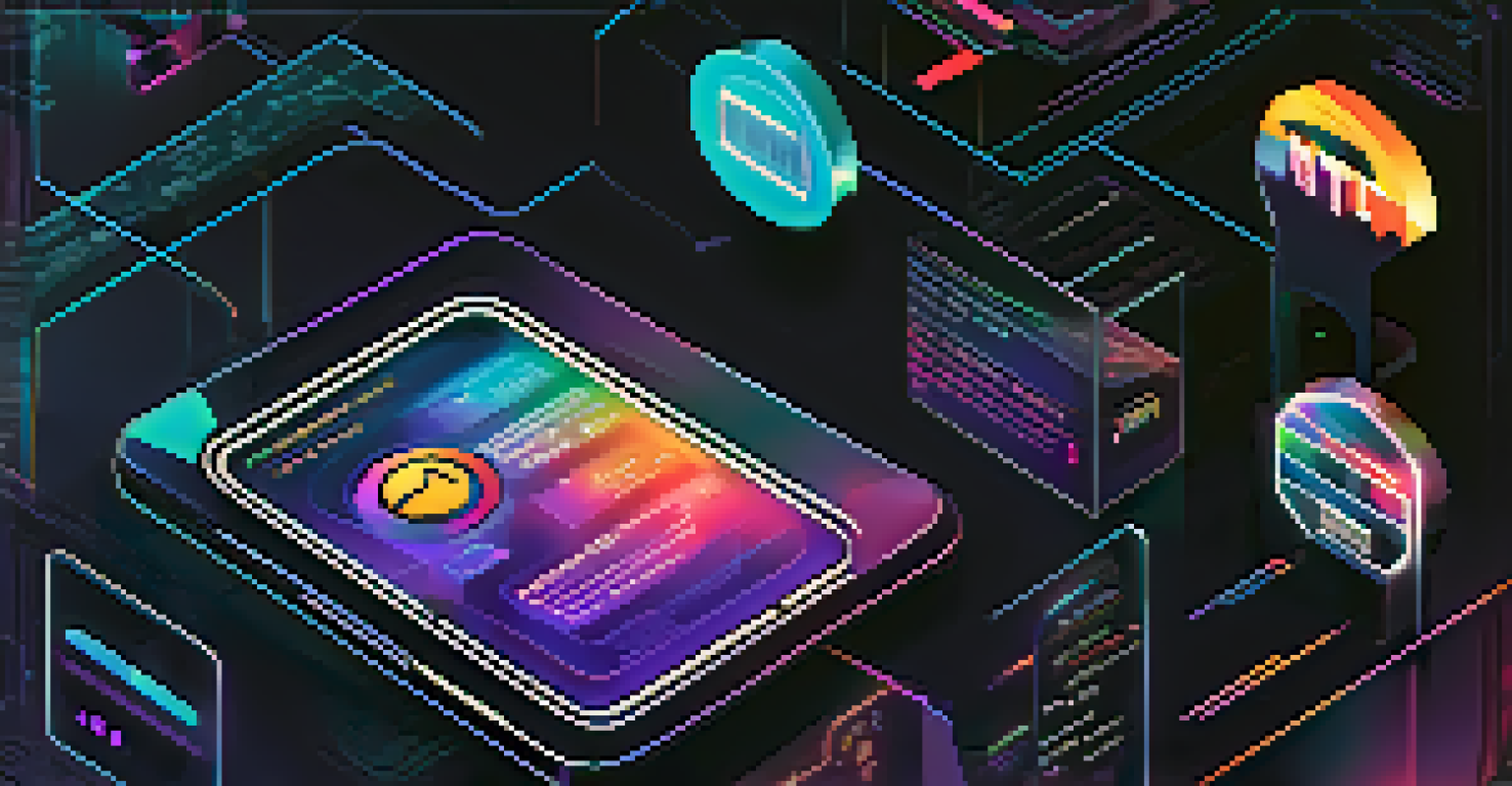NFTs in Education: Transforming Learning and Credentialing

Understanding NFTs: A Quick Overview for Educators
Non-fungible tokens, or NFTs, are unique digital assets verified using blockchain technology. Unlike cryptocurrencies like Bitcoin, which are interchangeable, each NFT has distinct information that makes it one-of-a-kind. This uniqueness opens up exciting possibilities for their use in education, particularly in credentialing and learning.
Education is the most powerful weapon which you can use to change the world.
In simple terms, think of NFTs as digital certificates that can prove ownership and authenticity of educational achievements. For instance, if a student completes an online course, an NFT could serve as a digital badge that verifies their accomplishment. This can be especially valuable in today’s competitive job market where proof of skills is crucial.
As educators, understanding NFTs allows you to explore how they can enhance engagement and recognition in your curriculum. By integrating NFTs into educational frameworks, we can create a more interactive and verifiable learning environment that benefits both students and institutions.
The Role of NFTs in Credentialing and Certification
One of the most significant applications of NFTs in education is in credentialing. Traditional certificates can easily be lost or forged, but NFTs are stored on a blockchain, making them secure and easily verifiable. This means employers can quickly confirm a candidate's qualifications without the risk of fraud.

Imagine a world where a student's achievements are easily accessible and verifiable through a simple digital wallet. Instead of carrying stacks of paper certificates, they can showcase their NFTs to potential employers or educational institutions, proving their skills and knowledge effortlessly. This streamlined process can save time and resources for everyone involved.
NFTs Enhance Credentialing in Education
NFTs provide secure and verifiable digital credentials, making it easier for employers to confirm candidates' qualifications.
Moreover, NFTs can facilitate lifelong learning by allowing individuals to accumulate various credentials over time. As they complete courses or gain skills, they can build a robust digital portfolio that reflects their journey, making education more personalized and appealing.
Enhancing Student Engagement with NFTs in Learning
Incorporating NFTs into educational frameworks can significantly boost student engagement. By awarding NFTs for achievements, participation, or even completing assignments, educators can create a sense of accomplishment that motivates students to take ownership of their learning. This gamified approach can make education more enjoyable.
The future belongs to those who believe in the beauty of their dreams.
For example, consider a classroom where students earn NFTs for collaborative projects or creative expressions. These digital badges not only serve as recognition but also foster a sense of community and healthy competition among peers. When students can showcase their achievements, they feel more connected to their educational experience.
Additionally, the use of NFTs can encourage students to explore new areas of interest. When students know that their efforts can result in a unique digital asset, they may be more inclined to dive into subjects outside their comfort zone, expanding their horizons in ways traditional methods may not.
Building a Transparent and Trustworthy Educational System
Transparency is a critical aspect of any educational system, and NFTs can help achieve this goal. By maintaining a public record of achievements on the blockchain, educational institutions can showcase their commitment to integrity and accountability. This transparency can enhance the reputation of both the institution and its graduates.
Furthermore, the immutable nature of blockchain technology means that once an NFT is issued, it cannot be altered or deleted. This feature ensures that students' records remain intact and credible, eliminating concerns over discrepancies in traditional record-keeping methods. Consequently, this fosters trust among students, educators, and employers alike.
Boosting Engagement Through NFTs
Incorporating NFTs in learning can motivate students by recognizing achievements and fostering a sense of community.
As we move toward a more digital future, embracing NFT technology can pave the way for a more trustworthy educational environment. By prioritizing transparency, institutions can build stronger relationships with students and stakeholders, ultimately enhancing the overall educational experience.
NFTs and the Future of Learning Pathways
The educational landscape is evolving, and NFTs can play a significant role in shaping future learning pathways. By allowing students to customize their learning journeys, NFTs can provide a flexible framework that adapts to individual needs and goals. This personalized approach can lead to more effective and satisfying educational experiences.
Imagine a student who has the option to choose courses based on their interests and career aspirations. As they progress, they can receive NFTs that represent their completed courses and skills acquired. This not only motivates them to pursue their passions but also helps them create a roadmap for their future paths.
Moreover, as educational institutions begin to recognize the value of NFTs, we may see a shift toward competency-based education. This model focuses on what students can do rather than just what they know, encouraging practical application of skills and knowledge, ultimately leading to better job readiness.
Overcoming Challenges: Adoption of NFTs in Education
Despite the potential benefits, the adoption of NFTs in education comes with challenges. One major hurdle is the lack of awareness and understanding of NFT technology among educators and institutions. To overcome this, educational leaders must invest in training and resources to help familiarize staff with the concept and its applications.
Additionally, concerns about accessibility and the digital divide cannot be overlooked. Not all students have equal access to technology or the internet, which could create disparities in learning opportunities. To ensure inclusivity, institutions must strive to provide equitable access to NFT-related resources and platforms.
Future Learning Pathways with NFTs
NFTs enable personalized learning experiences, allowing students to customize their educational journeys based on interests and goals.
Lastly, regulatory considerations regarding data privacy and security must be addressed. As educational institutions explore NFT integration, it's crucial to establish guidelines that protect student information while harnessing the benefits of blockchain technology. With the right strategies and support in place, these challenges can be navigated effectively.
Real-World Examples of NFTs in Education
Several educational institutions are already experimenting with NFTs to enhance their programs. For instance, some universities have begun issuing NFTs as digital diplomas, allowing graduates to easily share their credentials with potential employers. This innovative approach not only modernizes the credentialing process but also adds a layer of authenticity to the degree.
Another exciting example comes from online platforms that reward learners with NFTs for completing courses or engaging in community activities. These platforms are creating a new ecosystem where learners can earn, trade, or showcase their digital badges, making education more interactive and rewarding.

As these examples demonstrate, the integration of NFTs in education is not just a theoretical concept; it's happening right now. By looking at these pioneering initiatives, other institutions can draw inspiration and explore how they can implement similar strategies to benefit their students and communities.